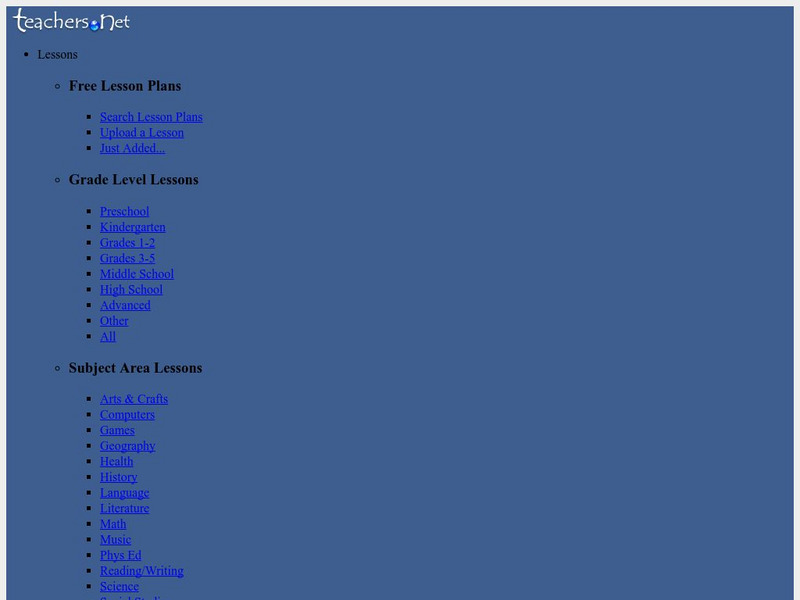Hi, what do you want to do?
Texas Education Agency
Texas Gateway: Write a Personal Narrative (English 7 Writing)
[Accessible by TX Educators. Free Registration/Login Required] You will write a personal narrative that has a clearly defined focus and communicates the importance of or reasons for actions and/or consequences.
Lumen Learning
Lumen: Boundless Communications: Using Life Experience (Narrative)
This lesson focuses on using narratives or stories in speeches. It discusses the importance of stories, the power of storytelling, and how and when to use stories in speeches.
Department of Defense
Do Dea: Real Survival Skills
Learn about process analysis, writing procedurals texts, the steps of the writing process, and cause and effect in this unit. Also, examine patterns of organization in writing. A handy chart shows common organizational patterns which...
Learning Farm
Learning Farm: Ccs: Time, Sequence, and Cause/effect
An automated lesson will engage student's learning how to describe the connection between a series of historical events, scientific ideas or concepts, or steps in technical procedures in a text. An introduction to the concept precedes a...
Other
Study.com: How to Use Descriptive Details & Sensory Language in Your Writing
When you write a narrative, you can draw your reader into your experiences by adding specific, concrete details and sensory language to your storytelling. This instructional activity tells you exactly how to do it. W.9-10.3d...
Texas Education Agency
Texas Gateway: Teaching: Prewriting and Planning Personal Narratives
This instructional activity focuses on prewriting and planning a personal narrative. The information can be used in all types of writing. It discusses brainstorming ideas, narrowing the focus, and developing the central idea. W.9-10.5...
Other
Thoughtful Learning: ccss.ela literacy.w.7.3.a
Pick and choose from these lessons and units that focus on narrative writing. Specifically, how to establish a context and point of view, introduce characters, and organize an event sequence.
Better Lesson
Better Lesson: W.3.3.b: Use Dialogue and Descriptions of Actions
Links to 2 lessons and activities that build student skills in standard W.3.3.b: Write Narratives to develop real or imagined experiences or events using effective technique, descriptive details, and clear event sequences.
Education.com
Education.com: W.3.3 B Worksheets: Use Dialogue and Descriptions
[Free Registration/Login Required] A site with links to 30 worksheets that can be downloaded and printed for student use while building skills with standard W.3.3B: Write Narratives to develop real or imagined experiences or events using...
Education.com
Education.com: W.3.3 Worksheets: Write Narratives to Develop Real or Imagined
[Free Registration/Login Required] A site with links to 30 worksheets that can be downloaded and printed for student use while building skills with standard W.3.3: Write Narratives to develop real or imagined experiences or events using...
Better Lesson
Better Lesson: W.3.3: Write Narratives to Develop Real or Imagined Experiences
Links to 47 lessons and activities that build student skills in standard W.3.3: Write Narratives to develop real or imagined experiences or events using effective technique, descriptive details, and clear event sequences.
Better Lesson
Better Lesson: Sensory Details
Students will learn how to enhance their narrative writing by incorporating sensory details to convey experiences and events. A power point presentation on sensory details is included.
Other
Writing World: Four Ways to Bring Settings to Life
A great resource outlining four major ways to make settings appear more real and genuine in fiction. Deals with themes such as motion, experience, mood, and the senses. W.11-12.3d Sensory/precise lang narratives
Better Lesson
Better Lesson: W.4.3b: Use Dialogue and Description to Develop Experiences/events
Links to 12 lessons and activities that build student skills in standard W.4.3b: Use dialogue and description to develop experiences and events to show the responses of characters to situations.
Better Lesson
Better Lesson: W.4.9a: Apply Grade 4 Reading Standards to Literature
Links to 8 lessons and activities that build student skills in standard W.4.9a: Apply grade 4 reading standards to literature (e.g., Describe in depth a character, setting, or event in a story or drama, drawing on specific details in the...
ArtsNow
Arts Now Learning: Perspective Drawing Inspired by n.c. Wyeth [Pdf]
In this lesson plan, students will generate unique fantasy drawings that utilize perspective and create the illusion of depth on a two-dimensional surface. Deriving inspiration from the American painter and illustrator N.C. Wyeth's The...
Florida Center for Reading Research
Florida Center for Reading Research: Nar Text Structure: Story Sequence Organizer [Pdf]
A lesson plan in which students read a narrative text and complete graphic organizers to sequence the story and finally create an illustrated storyboard. Materials are included.
Florida Center for Reading Research
Florida Center for Reading Research: Narrative Text Structure: Retell a Story [Pdf]
A lesson plan in which students read a narrative text and complete graphic organizers to map the story. Materials are included.
Florida Center for Reading Research
Florida Center for Reading Research: Narrative Text Structure: Sequence a Story [Pdf]
A lesson plan in which students read a narrative text and write the main events of the story on sentence strips. Materials are included.
Florida Center for Reading Research
Florida Center for Reading Research: Narrative Text Structure: Retell Ring [Pdf]
A lesson plan in which students read a narrative text and answer questions about the plot. Materials are included.
Common Sense Media
Common Sense Media: Education: Story Elements Retelling
In this lesson, students will learn to retell a story using story elements to improve their comprehension of the story. The students will actively listen to a story and complete a graphic organizer to share and discuss with a partner.
Education.com
Education.com: Draw the Story
[Free Registration/Login Required] Students will use their imagination to complete the story. How will it begin? How will it end? Great lesson for practicing sequencing.
Teachers.net
Teachers.net: Flip Books and Story Boards
While this lesson is designed to aid in communications technology, the concept and procedure of the lesson can be readily used in any class. The main concept taught is organization and developing chronological order.
Alabama Learning Exchange
Alex: My Most Memorable Experience
In this lesson, each student will write a narrative story about his/her most memorable experience. Students will develop the narrative writing mode and create a brochure using desktop publishing software.






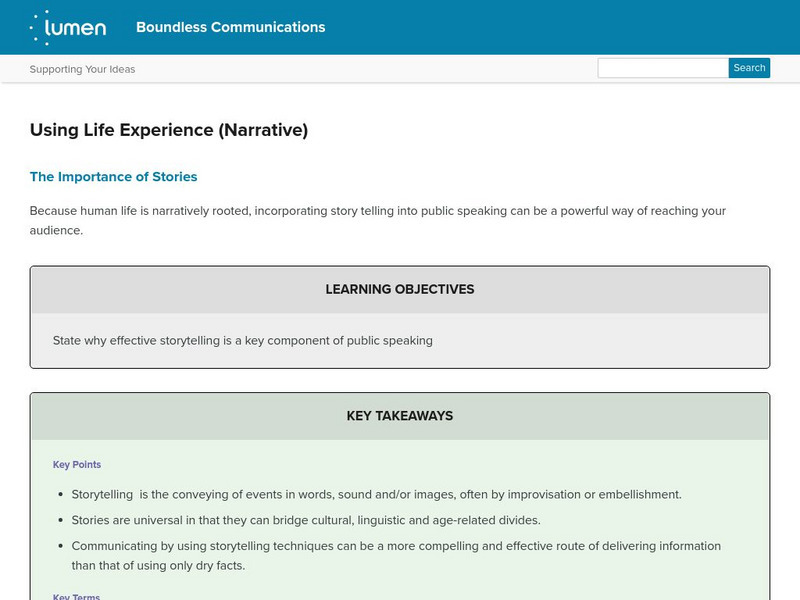
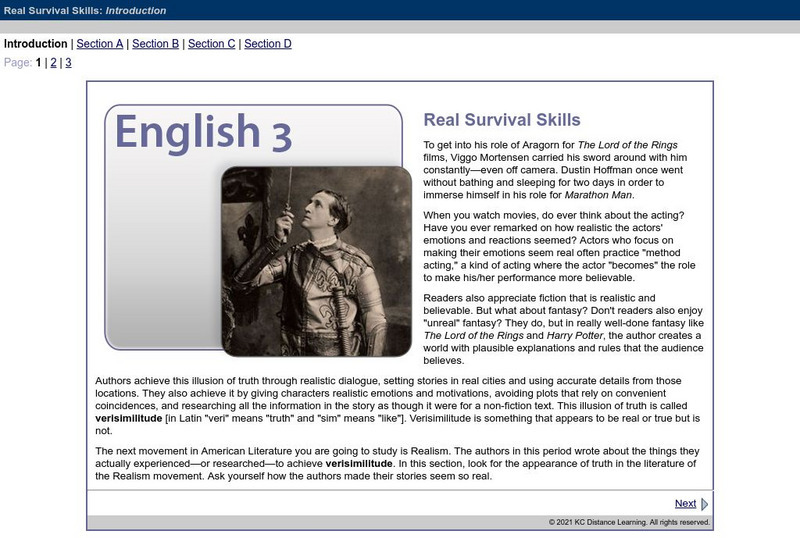
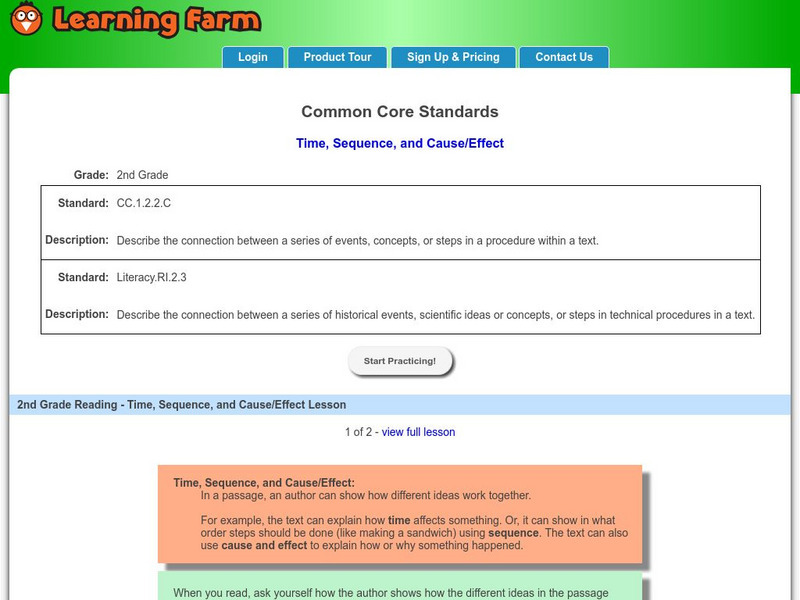

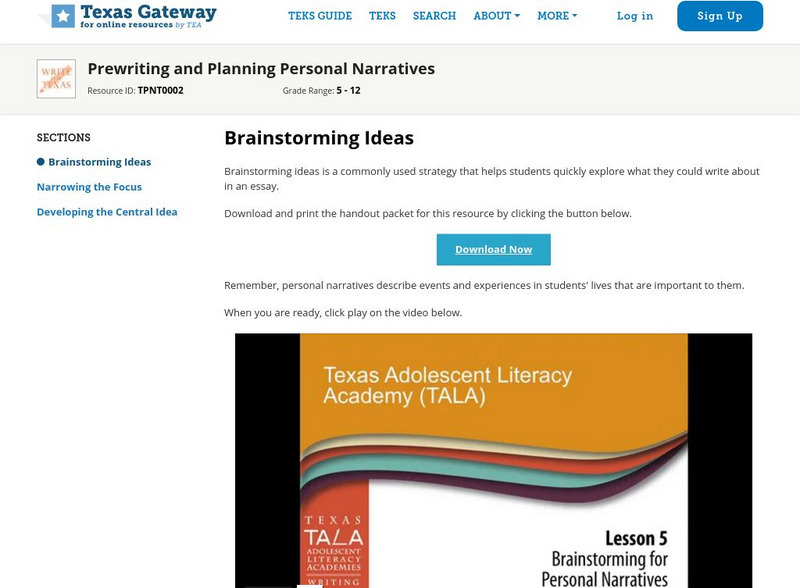
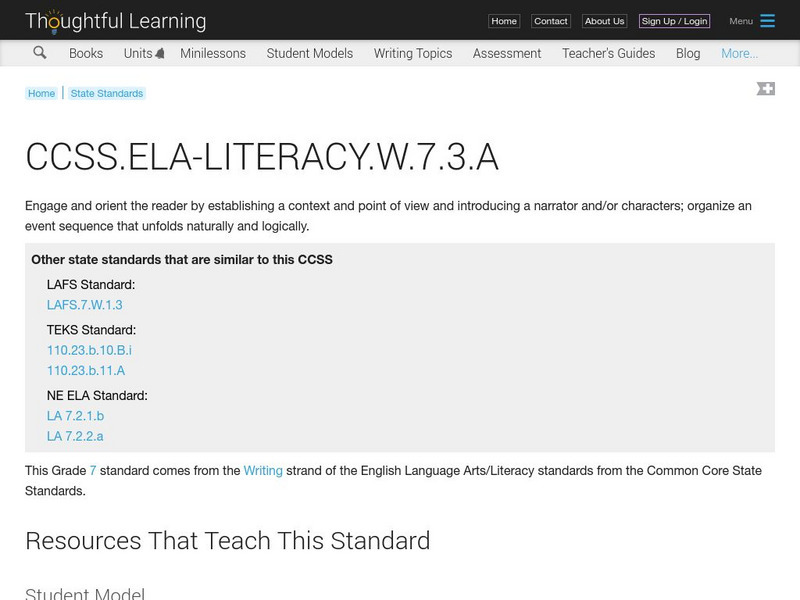
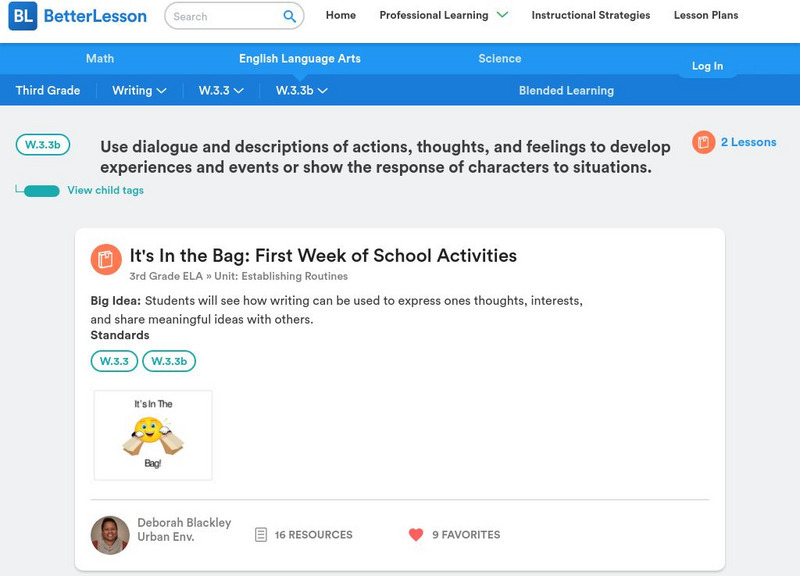

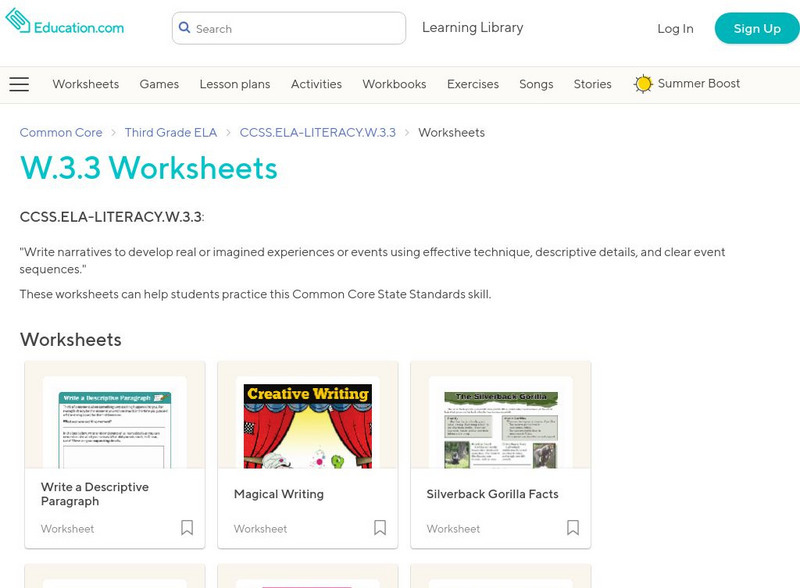

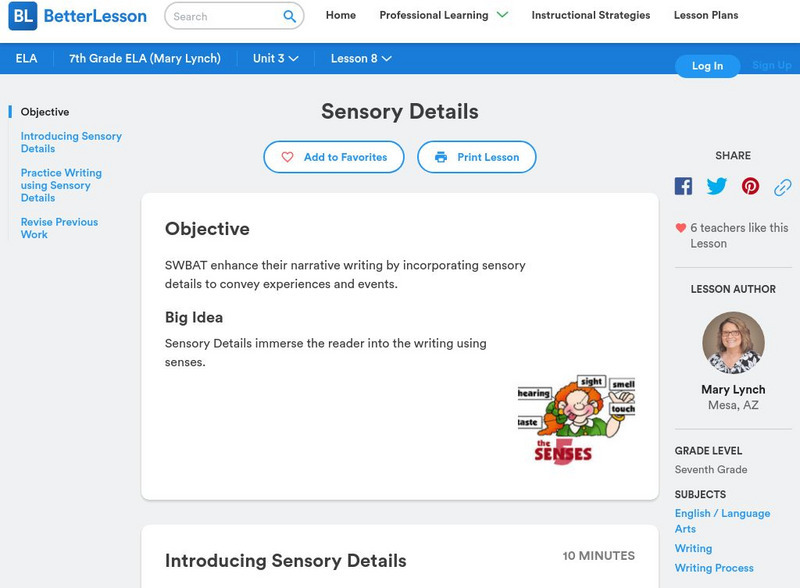
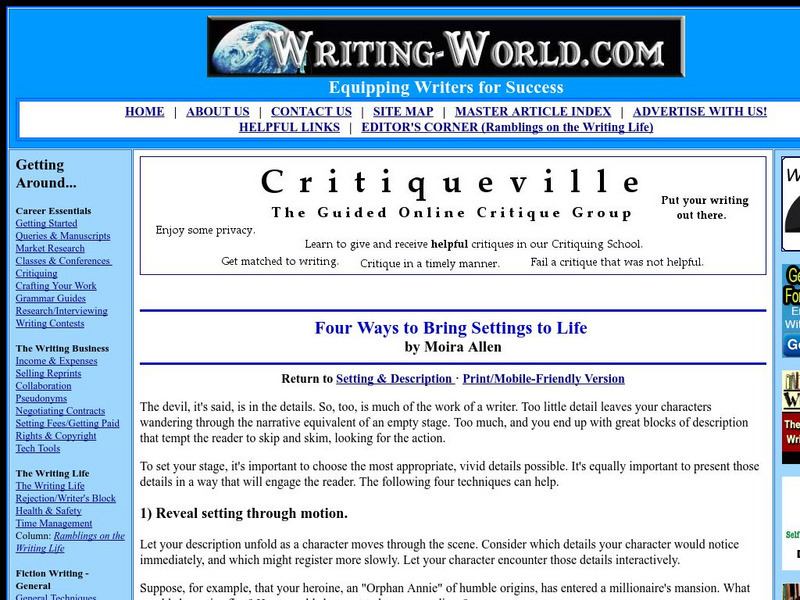


![Arts Now Learning: Perspective Drawing Inspired by n.c. Wyeth [Pdf] Lesson Plan Arts Now Learning: Perspective Drawing Inspired by n.c. Wyeth [Pdf] Lesson Plan](https://static.lp.lexp.cloud/images/attachment_defaults/resource/large/FPO-knovation.png)
![Florida Center for Reading Research: Nar Text Structure: Story Sequence Organizer [Pdf] Lesson Plan Florida Center for Reading Research: Nar Text Structure: Story Sequence Organizer [Pdf] Lesson Plan](https://content.lessonplanet.com/knovation/original/509122-4a1d30204bfd0328e9a581c70bcc9c07.jpg?1661786939)
![Florida Center for Reading Research: Narrative Text Structure: Retell a Story [Pdf] Lesson Plan Florida Center for Reading Research: Narrative Text Structure: Retell a Story [Pdf] Lesson Plan](https://content.lessonplanet.com/knovation/original/509123-4f86c5ac420f72674e32d96af5a04414.jpg?1661786938)
![Florida Center for Reading Research: Narrative Text Structure: Sequence a Story [Pdf] Lesson Plan Florida Center for Reading Research: Narrative Text Structure: Sequence a Story [Pdf] Lesson Plan](https://content.lessonplanet.com/knovation/original/509124-8f3f3c440d6b6d200b605de1c46e8d0a.jpg?1661786936)
![Florida Center for Reading Research: Narrative Text Structure: Retell Ring [Pdf] Lesson Plan Florida Center for Reading Research: Narrative Text Structure: Retell Ring [Pdf] Lesson Plan](https://content.lessonplanet.com/knovation/original/509125-ce2373a22ec043b4e3169ca469cf6012.jpg?1661786935)

